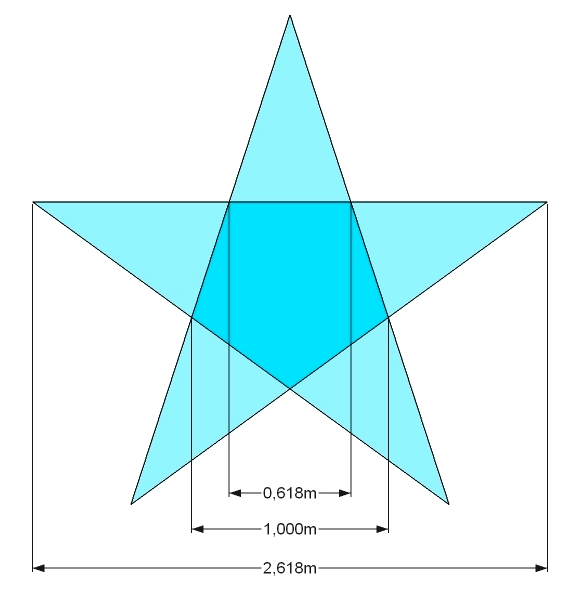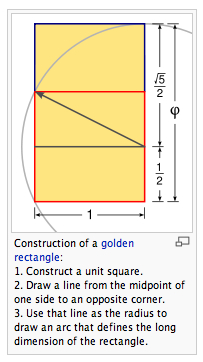Golden Section & other blonde questions
-
Fabulous program! Am getting to the point where I actually have questions. The first plateau?
I keep running into the Golden Section, but search as I might, I can't find out what it is. I'm even reading the User Guide and doing as many tutorials as I can. (Novel concept.)
Did a little cottage with help from all of you. Thanks to the collective crew. (Will upload it for any constructive advice. Crossing fingers I do it right.) Notice that the loo is right next to the office so I can keep on doing tuts.
Newbie cottageThis certainly is different from 2D Paint Shop Pro, but it's giving me a new perspective on perspective.
--Marlise
@unknownuser said:
*Whatever you have to do, you have to do something else first.*Murphy's Law
-
The giden section is just a ratio between the sides of a rectangle that looks particularly pleasing, thus youll find people use it a lot because it produces more pleasing things.
Its also related to the fibionacci series, you might have more luck if you google that.
Nice model as well, a good start. One little tip: its generally good modelling practice to keep all the faces facing the right way, in your modle you have lots of reversed faces, this can mess things up if you try and render it.
To fix this, first go to view->face style->monochrome. this temporarily hides all the textures so you can just se the faces, now all the ones that are blue are the wrong way round, to fix this, just right click on the offending face and hit 'reverse face'
i look forward to seeing more

-
Thanks so much, Remus. Will probably spend the rest of the night reversing faces. Am planning to do a series of buildings based on American architecture, so I have lots to learn.
--Marlise
-
The formula of golden section is x:y=y:(x+y). This can go on forever since y:(x+y)=(x+y):(x+2y) and so on.
Playing with numbers, it is something line 0.618:1=1:1.618=1.618:2.618 and so on (with 3 decimal precision).There are several examples of this ratio in nature as well as in human crated art or even mysticism. The leaves of many plants grow from the stem with such distances (bigger distances towards the bottom and snmaller towards the top), the shell of many snails or of the Nautilus grows like this (this way, as it only habitats the outmost cell of his shell, the cells can grow proportionally and the animal can keep its shape).
The Greek used it extensively in their architecture and the Pythagoreans even attributed some sacred features to it, see the attached Pythagorean Star with the above mentioned proportions.

-
Gaieus, you explain Golden Section far better than the Google search I did. (Did you guess I'm not an architect?) Many thanks.
James, you must have been peering over my shoulder -- as I was trying to figure out which faces should be reversed -- and which faces really were reversed to begin with. (Nothin' worse than a blonde newbie.) Appreciate the links. Assimulating.
I'm working like fury to make in(ter)ference become inference. Espresso helps.
--Marlise
-
@marlise said:
Gaieus, you explain Golden Section far better than the Google search I did. (Did you guess I'm not an architect?) Many thanks...
And did you guess I'm not an architect either? Have not even learnt/studied anything (natural) sciences related since I left secondary school 25 years ago.

-
Marlise,
Make one yourself in SketchUp, see attached picture. The Golden
Ratio runs throughout nature. Just look at your fingers and you
will find it
Mike

-
Mike, can I really "try this at home"? Wow. Must look at nature more (other than the stuff growing in my keyboard). Thanks.
Gaieus, if you must know, I've been learning American architecture from the Internet for a while. http://marlisepsp.tripod.com/ and others This is why I'm mad about SU, as you can tell from the perspective in the 2D drawings.
BTW, I've been celebrating my 27th birthday for the last 41 years. Almost got it.
Thanks to all of you again. I'm doing an adobe hacienda at the moment.
--Marlise -
I had a look at the columns. Fine, really nice! I'm an archaeologis myself (although in a "remote and rather barbarian province" we rarely find all those classic(al) orders). Still I teach them...

Advertisement







